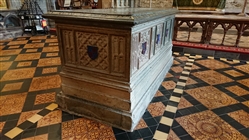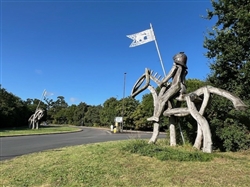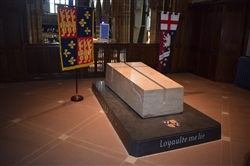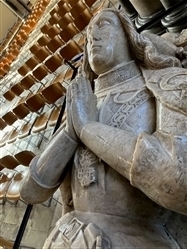Edmund Tudor
Title:
Earl
First Name:
Edmund
Last Name:
Tudor
Memorial Type:
Memorial - Other
Does the monument still exist?
Yes
Installation Date:
c 1543
Inscription:
Heu, Regum Genitor, et Frater splendidus Heros
Omnis quo micuit Regia Virtus, obit.
Herculeus Comes Ille tuus Richmondia Duxque
Conditor Edmundus his quoque Marmoribus
Qui Regni Clypeus, Comitum Flos Malleus Hostis
Vite Dexteritas, Pacis Amor erat.
Hic meditare vians, te semper vivere posse,
Non morieris homo, non miselle vides,
Cesar quem tremeret Armis, nec vinceret Hector
Ipsa devictum Morte ruisse Virum.
Cede metrum precibus: det Regum Conditor almus
Eius spiritus lucida Regna Poli.
(Alas, the father of kings and illustrious brother of heroes, in whom shone every kingly virtue, is dead. That lord like Hercules, your Duke, of Richmond, Edmund, is also buried in this marble. He was the kingdom’s shield, the flower of chivalry, the quickness of life, the lover of peace. Ponder here as you go your way, that you can live for ever. You will not die as a man. Do you not see, wretched man, that a man has fallen, overcome by death itself, whom Caesar quaked at in war, and Hercules did not conquer. End the verse with prayers: may the bountiful Maker of Kings grant his spirit the bright kingdoms of the sky)
Under this Marble Stone here enclosed rest the Bones of that Noble lord Edmund Earl of Richmond Father and Brother to Kings the which departed out of this world in the year of our Lord God a thousand four hundred and fifty and six the first day of the month of November on whose soul Almighty Jesu have mercy Amen
Allegiance:
Lancastrian
Condition:
Good
Condition Description:
The Purbeck marble chest is in good condition but the brass was removed in the 17th century and what is there now is a late 19th century replacement
Memorial Notes:
Edmund Tudor died in Carmarthen in 1457 and was buried in the Franciscan friary there.
He had a fairly simple alabaster tomb. This was replaced by his son Henry VII in c 1500 with a Purbeck chest and brass. The friary was closed in 1538 and the tomb (and presumably the body) moved to St Davids in the early 1540s. More detail in M. Gray, 'The Tombs of Edmund Tudor', Carmarthenshire Antiquary 61, online at https://pure.southwales.ac.uk/en/publications/ipublication-forthcoming-ithe-tombs-of-edmund-tudor
Memorial Address:
The Pebbles, St Davids, Pembrokeshire SA62 6RD
County:
Pembrokeshire
Country:
Wales
Location within building:
Presbytery
Geoloation:
SM 75153 25434







